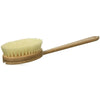How Aromatherapy Enhances Cognition in Aging

Introduction: Smell as a Cognitive Superpower
When we think about keeping our brains sharp as we age, most of us focus on puzzles, reading, or exercise. But we seldom consider the power of our nose. However, new evidence from the field of neuroscience suggests that our sense of smell - olfaction - is deeply tied to brain health, memory, and emotional regulation.
In fact, a declining sense of smell may be an early indicator of neurodegenerative disease, while strengthening olfactory acuity could act as a tool for improving brain function and staving off cognitive decline...
Let' look into the neurophysiological mechanisms behind olfaction and cognition, supported by peer-reviewed research and expert commentary. We'll also explore practical aromatherapy strategies that might enhance mental performance and emotional well-being, especially in later life.
I. The Nose-Brain Connection: A Neurological Shortcut
Unlike other senses, olfactory input bypasses the brain's relay center, the thalamus, and instead travels directly to the limbic system—the seat of emotion, memory, and motivation.
“Olfaction is unique because it has a direct line to the hippocampus and amygdala,” says Dr. Rachel Herz, a neuroscientist at Brown University and author of The Scent of Desire. “That gives it unrivaled influence on memory and emotion.”
Key Brain Areas Activated by Smell:
- Olfactory bulb – First point of contact; processes smell and sends signals deeper into the brain.
- Piriform cortex – Primary olfactory cortex; involved in odor identification.
- Amygdala – Processes emotions and links them to odors.
- Hippocampus – Essential for learning and memory; directly stimulated by olfactory signals.
A 2020 study in Frontiers in Neuroscience found that odor enrichment in mice not only enhanced olfactory function but improved spatial memory, suggesting a link between smell training and hippocampal plasticity. This adds to growing evidence that olfactory stimulation can lead to neurogenesis—the birth of new neurons—in the hippocampus, even in aging brains.
II. Smell Decline and Cognitive Decline: A Shared Pathway
Loss of smell—anosmia or hyposmia—is more than a nuisance. It’s often a precursor to Alzheimer’s and Parkinson’s disease.
A 2017 study in JAMA Neurology found that older adults with a poor sense of smell were 2.2 times more likely to develop dementia within five years. In Alzheimer’s patients, the olfactory bulb and entorhinal cortex—critical hubs for smell and memory—are often among the first areas to show neurodegeneration.
“Olfactory dysfunction is a biomarker for brain aging,” notes Dr. Jayant Pinto, a researcher at the University of Chicago. “The mechanisms that underlie smell loss may overlap with those that underlie neurodegenerative disease.”
So if we can train the olfactory system, can we also protect the brain?
III. Smell Training: A Workout for the Brain
Smell training, sometimes called "olfactory enrichment," involves deliberately smelling specific odors twice daily. It’s been used to help patients recover from smell loss (e.g., post-COVID anosmia), but its cognitive benefits are now being explored.
In a randomized controlled trial published in Chemical Senses (2014), older adults who engaged in 12 weeks of smell training with four essential oils (rose, eucalyptus, lemon, and clove) showed improved olfactory discrimination and verbal memory.
More recent findings from a 2022 Neuroscience study indicate that daily exposure to enriched odor environments led to increased connectivity between the hippocampus and default mode network—a brain circuit associated with memory and self-referential thinking.
Why It Works:
- Neuroplasticity: Smell training increases synaptic plasticity in key brain regions.
- Attention and engagement: Actively focusing on smells recruits attentional systems.
- Emotional valence: Scents tied to positive memories may stimulate dopaminergic reward circuits, improving mood and motivation.
IV. Aromatherapy for Cognitive Enhancement: Practical Tips
Here’s how to make smell training a simple, powerful addition to your daily routine.
1. The Four-Scent Protocol
Use essential oils from distinct categories:
- Floral – Rose, lavender
- Resinous/Spicy – Clove, frankincense
- Citrus – Lemon, orange
- Herbal – Eucalyptus, rosemary
Smell each oil for 10 seconds, twice a day, for at least 3 months. Focus on the scent and try to name it.
Pro tip: Pair the scents with a verbal or visual cue (“This is lemon. It smells bright and clean.”) to engage more of your brain.
2. Mindful Scent Association
Choose one calming and one energizing scent. Use them at the same time each day—like lavender before bed and rosemary in the morning. Over time, your brain builds associations that can enhance circadian rhythms and memory.
3. Rotate Scents Every Month
Just like cross-training the body, your olfactory system benefits from variety. Swap in new oils every 3–4 weeks to stimulate different olfactory receptors.
4. Smell While Learning
Incorporate distinct smells while reading or studying. Later, recalling that smell can cue memories of the content—a technique known as context-dependent memory.
Final Thoughts: Smell is More Than Scent
Olfaction is a powerful, often overlooked gateway to cognitive resilience. By actively engaging with your sense of smell, especially as you age, you strengthen the very neural circuits most vulnerable to decline.
Dr. Thomas Hummel, director of the Smell and Taste Clinic at the University of Dresden, expplains:
“If we consider olfactory training the way we do physical or cognitive training...then regular practice could significantly influence how the brain ages.”
In a world obsessed with visual and digital stimulation, we might just be forgetting to smell the roses—and in doing so, missing out on a tool for long-term brain health.
References
- Herz, R. (2007). The Scent of Desire. HarperCollins.
- Pinto, J. et al. (2017). “Olfactory dysfunction predicts 5-year mortality in older adults.” JAMA Neurology.
- Hummel, T. et al. (2014). “Effects of olfactory training in patients with olfactory loss.” Chemical Senses.
- Mori, K., & Sakano, H. (2020). “How is the olfactory map formed and interpreted in the mammalian brain?” Annual Review of Neuroscience.
- Lundström, J.N., & Boesveldt, S. (2022). “Olfactory memory and aging.” Neuroscience.

September 27, 2025
Immune Supplements: Top 10 Best Supplements to Boost Immunity
Are you looking for effective ways to enhance your body’s natural defense? Immune supplements have become popular choices to support the immune system booster function, especially in times of increased illness risk. With so many products...
Read more
September 27, 2025
Cell Phone and WiFi Safety: How to Prevent and Treat EMF Damage and Electrosensitivity
Electrohypersensitivity (EHS), often called electrosensitivity, has been a polarizing and increasingly relevant issue over the past decade and a half. Since the number of people identifying with these symptoms continues to grow exponent...
Read more
September 27, 2025
Raw Carrots: Nature’s Antibacterial & Antiseptic Food
For most of us, carrots are simply a crunchy snack or a source of vitamin A. But according to researcher Ray Peat, PhD, raw carrots offer something more unusual: they act as a kind of natural antiseptic inside the gut, helping to contro...
Read more




Leave a comment